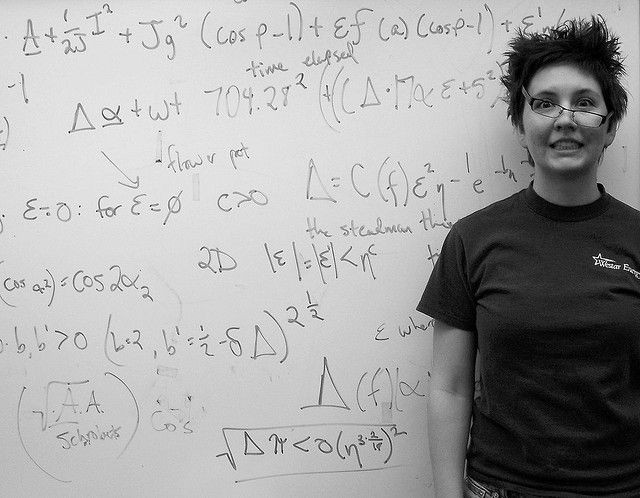Can An Online Autism Spectrum Test Accurately Screen For The Disorder: Am I Along The Spectrum?

Recently, Jerry Seinfeld changed his mind and made headlines. First, he told NBC he thought he landed somewhere on the autism spectrum scale, and then months later he told Access Hollywood he did not. Along the way, he characterized being on the spectrum as an “alternative mind-set.” While that may be a cheery, feel-good way to view the disorder, Seinfeld raised some important questions about what it means to be autistic and whether any particular screen may provide an accurate diagnosis.
After all, the Internet abounds with tests (here and here, for instance) to help you screen yourself (and others) for this disorder. Yet, authorities in the field as well as most of the tests themselves warn that any self-test requires supporting data from “a more comprehensive evaluation by a specialist.” While that may be the case, it is also true that some online test questions are the same or very similar to those incorporated in a diagnostic examination.
Critics of online tests offer a more important reason why these tests are not always valuable when they suggest there may be a gap between test-takers’ answers to questions, such as "I notice patterns in things all the time" and "I would rather go to a library than to a party" and their actual behavior. In other words, our self-perceptions are often slightly, or even wildly, inaccurate. By actually observing a test-taker perform a task, an autism specialist would be able to objectively assess whether the person notices patterns and possesses so-called systemizing ability more than most people.
One of the tests, created by Simon Baron-Cohen at the University of Cambridge and popularized by Wired magazine, is commonly referred to as the Autism Quotient (AQ). Baron-Cohen used his AQ test to survey Cambridge undergraduates and discovered science and math students scored higher on measures of autistic traits than social sciences and humanities students. After interviewing some of the students with high AQs, researchers discovered some matched the criteria for autism spectrum disorder, yet the students decided against pursuing a formal diagnosis.
Which brings us back to Seinfeld: Does landing somewhere on the autism spectrum automatically mean extreme dysfunction or can it be — as these high achieving students would suggest — an alternative mind-set?
Along The Spectrum
Autism spectrum disorders are characterized by difficulties in social interaction, verbal and nonverbal communication, and repetitive behaviors. However, each individual with autism is unique and their degree of difficulty in each symptom area varies tremendously. While some on the autism spectrum are unable to live independently, about 40 percent have average to above average intellectual abilities with many considered exceptional. Asperger’s syndrome, for instance, is often considered by professionals to be "a milder form" of autism; individuals with Asperger's are often described as “high-functioning.” Still, about a quarter of all autistic people are considered nonverbal, even though in some cases they can learn to communicate using other means.
In the United States, over three million individuals have been diagnosed as somewhere on the autism spectrum, worldwide the figures surpass tens of millions. The Centers for Disease Control and Prevention identifies one in 68 American children as on the autism spectrum. However, a sharp sex difference exists — autism is four to five times more common among boys than girls. Overall, then, one out of 42 boys and one in 189 girls are diagnosed with autism. Prevalence rates have increased 10 percent annually in recent years, the government calculates, with the reasons underlying this frightening trend frequently and hotly debated.
One Opinion
“I have been researching autism intensely over the past eight or nine years, looking at various environmental toxicants to see which ones are going up in step with autism, and then going to the biomedical research literature to try to explain the mechanism,” Dr. Stephanie Seneff, senior research scientist at MIT Computer Science and Artificial Intelligence Laboratory, told Medical Daily in an email. About two and a half years ago, Seneff discovered what she believed to be a link between autism and glyphosate and so she has been, in her own words, “researching [glyphosate] obsessively ever since then, because its effects on human physiology align remarkably with the complex comorbidities of autism.”
Specifically, if you were to plot autism rates during first grade in the U.S. school system, she says, this line would coincide with a plot of glyphosate usage on corn and soy crops over the previous four years.
Glyphosate, according to the Environmental Protection Agency, is a herbicide used on a variety of fruit, vegetable, and field crops and widely used to control weeds. It is the active ingredient in RoundUp, a product made by Monsanto, which ranks as the number one herbicide worldwide. Genetically modified (GM) crops are bred to resist damage from the product, so RoundUp with glyphosate kills the weeds, without hurting the plants.
In 2001, when the current 12-year-olds were in utero, less than 10 percent of the corn was "GMO Roundup-Ready" whereas for the past several years it has been 90 percent (along with 90 percent of the soy, canola, and sugar beets). “These crops readily absorb the glyphosate that's directly sprayed on them,” Seneff told Medical Daily. Meanwhile, children’s exposures to aluminum, glutamate, folate, iron, and mercury are increasing. “These are all synergistically working with glyphosate to cause autism,” she said.
Importantly, she believes that regressive autism is rising at a faster rate than autism that is present from birth. "In other words, the child appears to be developing normally until the age of perhaps 18 months, and then they start losing their language skills and becoming more withdrawn every day until they finally lapse into an autistic diagnosis," she told Medical Daily.
Based on all her research, Seneff predicts at the end of this decade earliest (more conservatively by 2032), one in every two children born will be diagnosed with autism.
One writer, in a blog post for Monsanto, says that many of her observations are “incorrect or poorly established,” while another scientist baldly states Seneff’s published scientific work is “a load of crap.” Clearly, Seneff’s opinions are controversial. However, some of her more mild critics suggest that, while she has made the association between glyphosate and autism clear, causation has not yet been rigorously established. With the recent rise in autism rates, it would be safe to say many people feel this is a worthy avenue of research — the possibility of one or many environmental causes needs to be explored in detail and in depth.




























